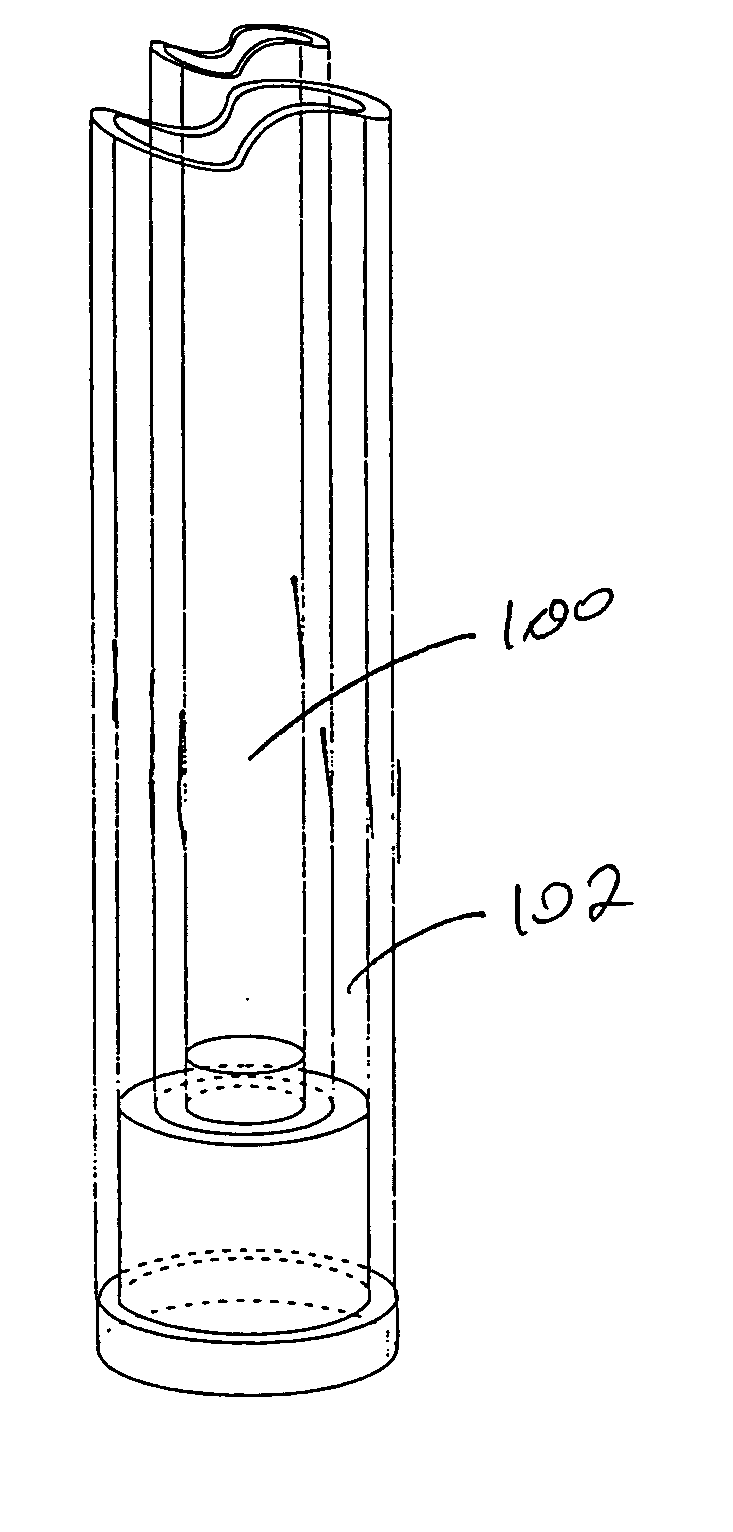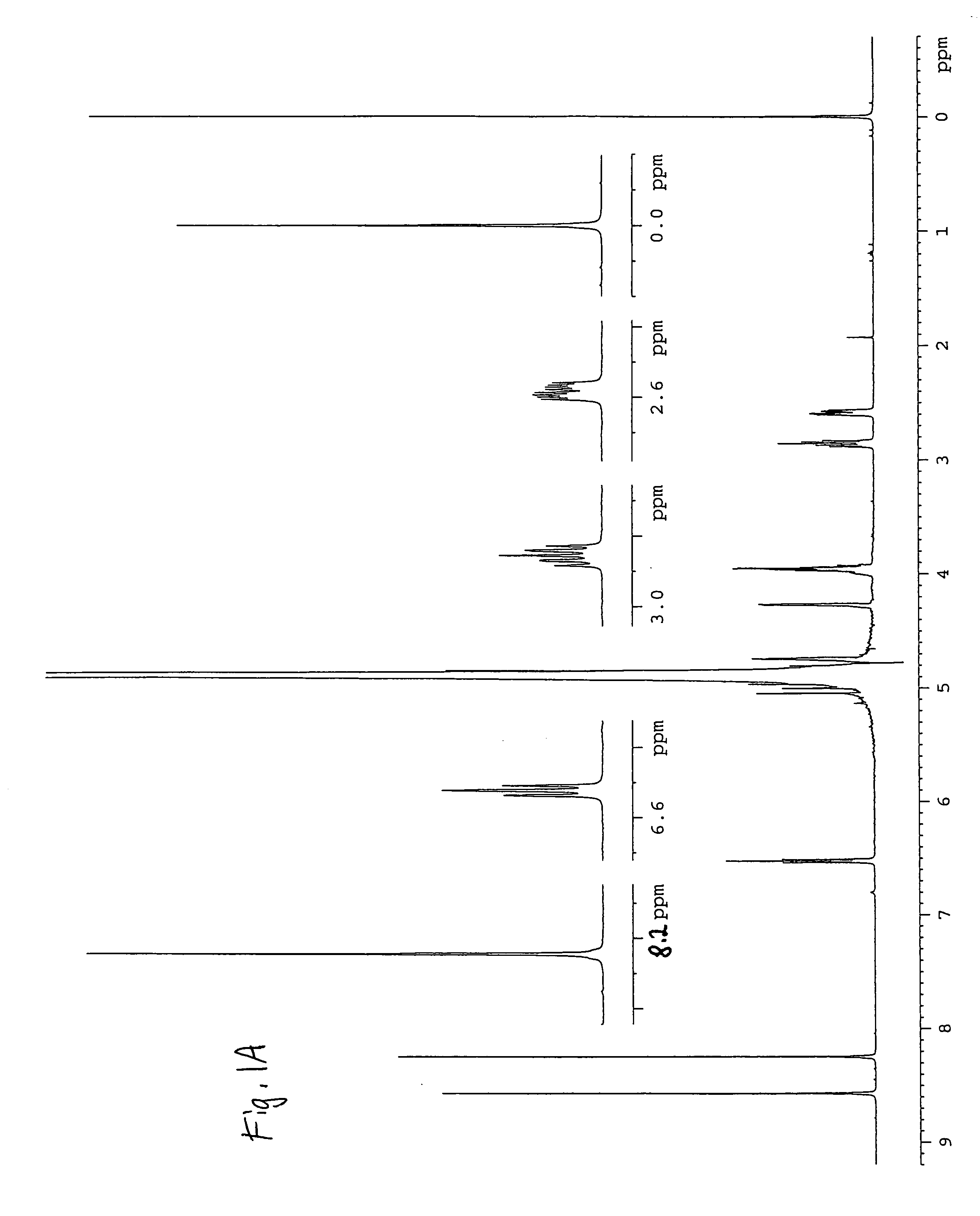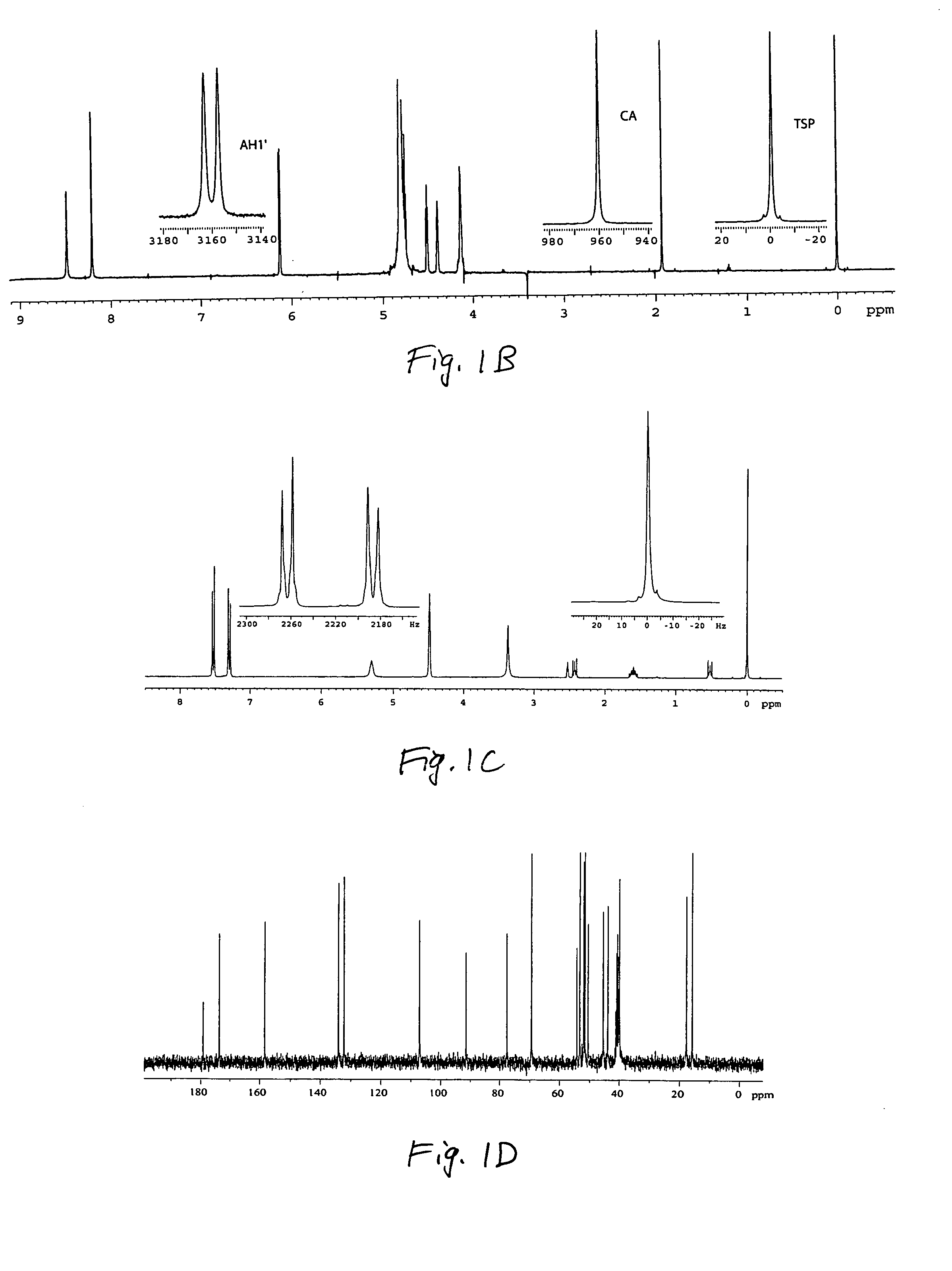Polymeric NMR sample tubes & method for using
a sample tube and polymer technology, applied in the field of polymeric sample tubes, can solve the problems of distorted magnetic lines of force in glass sample tubes, high-precision glass sample tubes, etc., and achieve the effects of reducing tube expense, improving spectroscopic sensitivity, and improving spectroscopic sensitivity
- Summary
- Abstract
- Description
- Claims
- Application Information
AI Technical Summary
Benefits of technology
Problems solved by technology
Method used
Image
Examples
Embodiment Construction
[0055] Any technical terms and abbreviations, not explicitly defined below, are to be construed with their ordinary meaning as understood by one of skill in the art of high resolution nuclear magnetic resonance spectroscopy. In addition, the attached research plan from the Phase II grant application (pages 25-47, as redacted) to the National Institutes of Health Small Business Technology Transfer Research program (Michael J. Cavaluzzi, Principal Investigator, NIH 2 R42 RR018442-02) is incorporated in its entirety in this patent application. The references cited on pages 46 and 47 of the Phase II grant application are also incorporated herein by reference.
[0056] Sample Active Volume. Referring to FIGS. 1A-1C, the detected induced voltage amplified and transformed to a display of peaks in a spectrum as a result of NMR is shown. A typical NMR spectrometer employs a solenoid at liquid helium temperatures, permitting an extremely high electrical current to flow through the solenoid and ...
PUM
 Login to View More
Login to View More Abstract
Description
Claims
Application Information
 Login to View More
Login to View More - R&D
- Intellectual Property
- Life Sciences
- Materials
- Tech Scout
- Unparalleled Data Quality
- Higher Quality Content
- 60% Fewer Hallucinations
Browse by: Latest US Patents, China's latest patents, Technical Efficacy Thesaurus, Application Domain, Technology Topic, Popular Technical Reports.
© 2025 PatSnap. All rights reserved.Legal|Privacy policy|Modern Slavery Act Transparency Statement|Sitemap|About US| Contact US: help@patsnap.com



